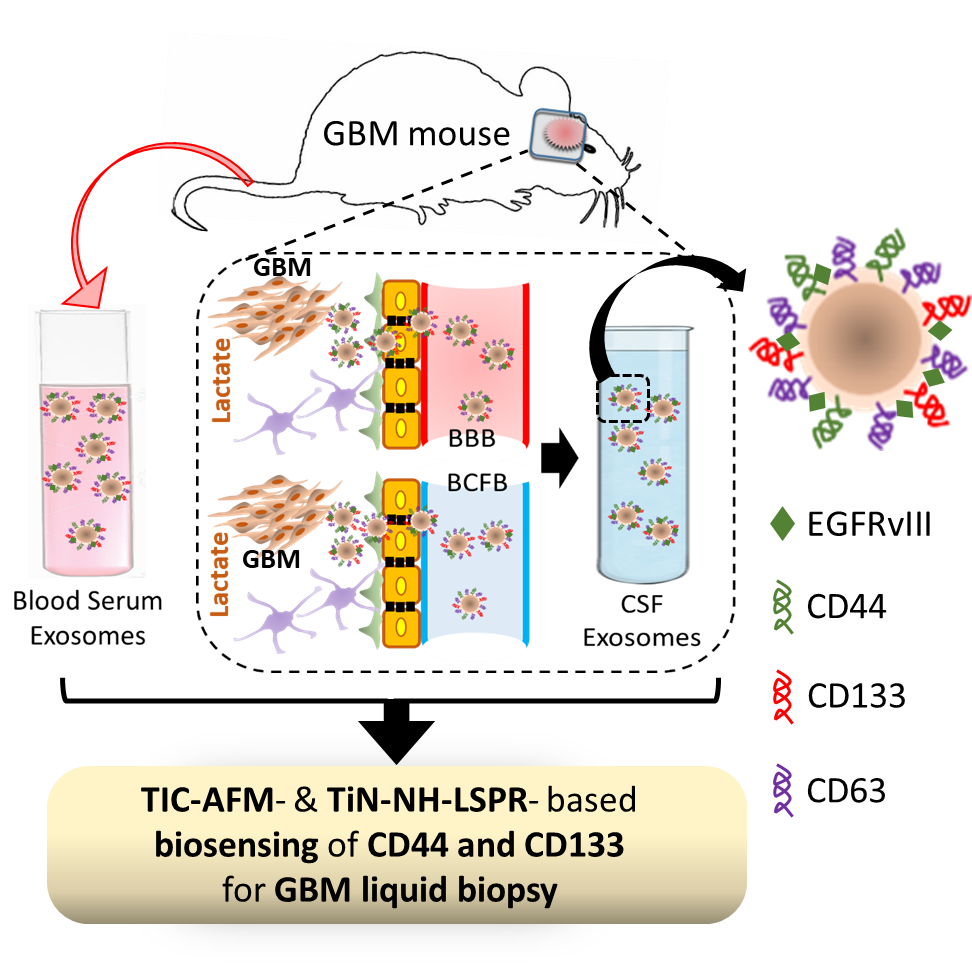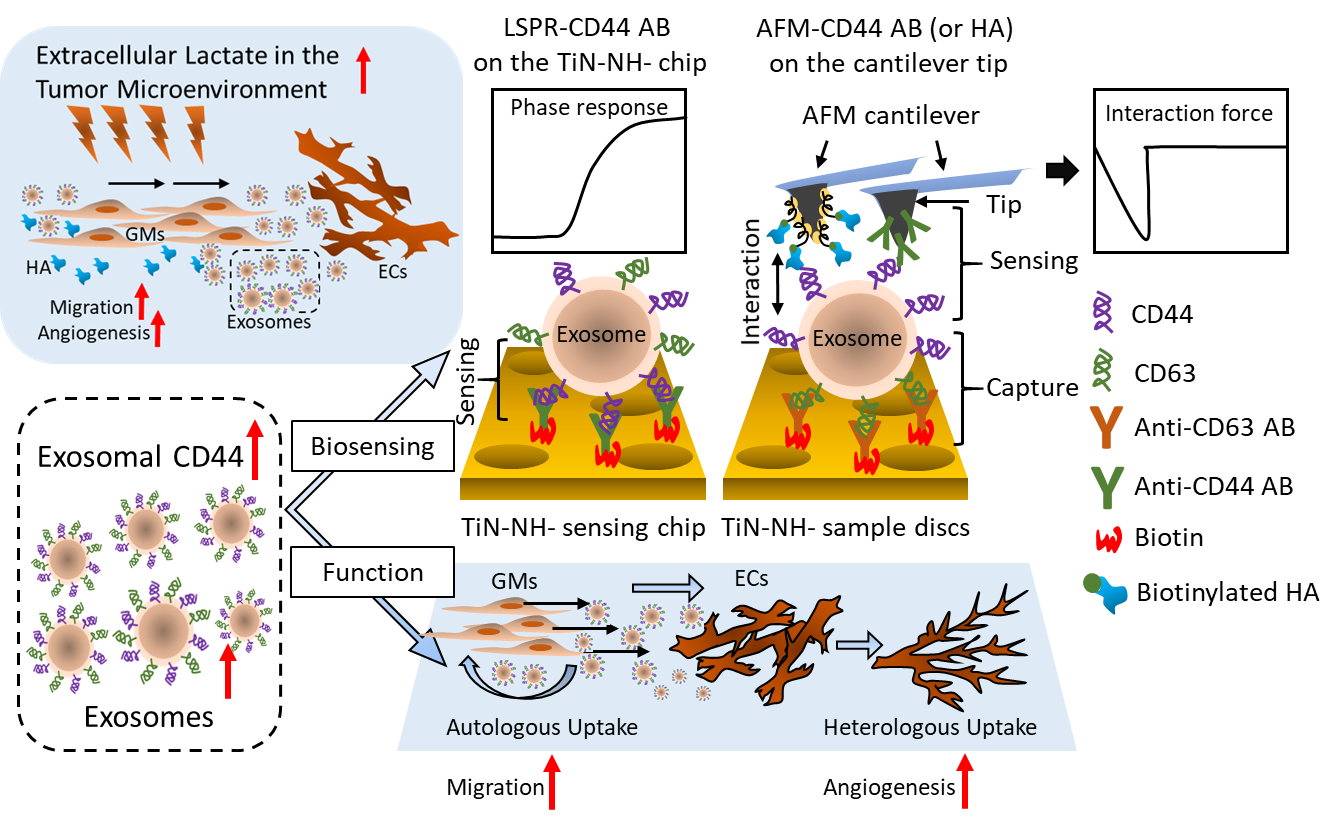


Opportunity
Glioblastoma is a deadly primary tumor in the central nervous system (CNS), whose diagnosis and prognosis are limited owing to the presence of the blood-brain barrier (BBB). Exosomes, an extracellular vesicle with a size ranging between 30-200 nm are found to be plentifully released from glioma cells (GMs) and could cross the BBB and present in biofluids including the cerebrospinal fluid (CSF) and the blood serum. Meanwhile, Surfaces proteins CD44 and CD133, prevalent markers of cancer stem cells (CSCs), are found in exosomes isolated from CSF- and blood serum- derived from glioma mouse model. It is also found that the enhanced expression of CD44 and CD133 can be detected in exosomes isolated from CSF and blood serum of glioma mouse model compared to that in sham-operated mouse. Therefore, monitoring of CD44 and CD133 in exosomes isolated from CSF and blood serum can be potentially used for liquid biopsy of malignant glioma progression.
Technology
In this invention, atomic force microscopy (AFM) and localized surface plasmon resonance (LSPR) biosensors have been applied to prove the detection feasibility of GBM-derived exosomal biomarkers CD 44 and CD133 in vivo. Intracranial implantation of U87 luciferase (Luc)- GMs into the brain of immunodeficient mice were conducted by the detection of bioluminescence to confirm the enhanced level of CD44 and CD133 in malignant GBM in vivo could be quantified by LSPR biosensor using exosomes from the peripheral blood and the CSF of a mouse model of GBM. Importantly, the invention demonstrates a newly established label-free TiN-NH-LSPR biosensor could specifically detect increased level of exosomal CD44, CD133, EGFRvIII from the blood and the CSF of a mouse model of GBM, which was further validated using EGFRvIII ABs- immune-captured GMs-derived exosomes, which provides great insights into the development of exosome-based sensitive biosensing techniques for detecting early GBM formation and further monitoring GBM progression as liquid biopsy.
Advantages
- Detection on CD44 and CD133 in exosomes isolated from CSF and blood serum brings a potential minimally-invasive testing method for tracking glioblastoma malignancy.
- The combination of dynamic beads selection with AFM and LSPR could enhance the specificity and sensitivity of collection on exosomes.
Applications
- Detection on CD44 and CD133 in exosomes isolated from CSF and blood serum can be potentially used for liquid biopsy of malignant glioma progression.
- LSPR biosensors could be applied as a highly sensitive tool for tracking cancer progression.
- AFM and LSPR biosensors could be applied to detection GBM-derived exosomal biomarkers CD 44 and CD133 in vivo.



